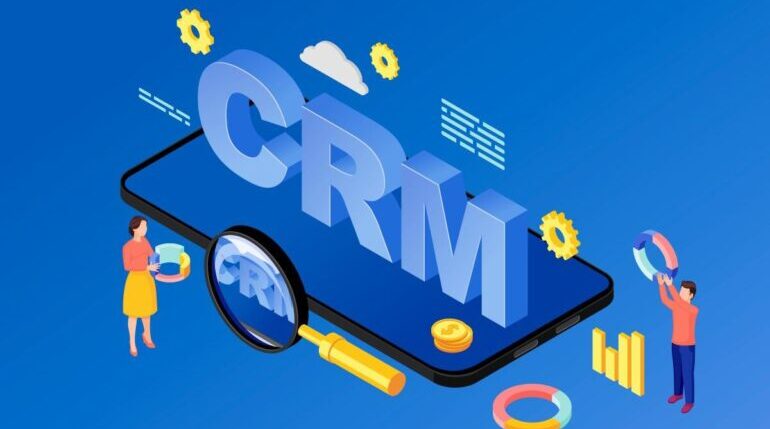A business solution is only as good as the results it shows. And to see those results, you need to define and track relevant metrics. It’s that simple. Or is it? In the past, we wrote a lot about the concept of Customer Relationship Management (CRM) solutions. We wrote about the benefits it has and the ways it can affect different parts of a business. We also visited the topic of measuring the success of CRM implementation. Today, we take a look at the essential CRM metrics that you want to focus on when attempting to determine the overall performance of the solutions you chose.
Why do these metrics matter if the software works?

Because there is a difference between having functional and optimal software. In order to determine whether the CRM you opted for is the perfect choice for your business, you need to confirm it through actual data. That is where the need for defining and tracking performance through pre-defined metrics comes into play. Given that there are many different CRM solutions available today, not all of them will be perfectly suited for your company.
Instead, you will want a CRM platform that will cater to the specific needs of your business processes, both internal and external. Only then will you be able to use the full potential of this type of software to grow your moving business. Otherwise, you might as well continue taking the manual path and see how far ahead that will get you.
7 essential CRM metrics that you need to take into consideration

#1: Customer Churn
Upholding customer relations is an important part of doing business. And the best metric that can showcase that is customer churn. To put it simply, this is a metric that shows the percentage of recurring customers during a specific period of time. It is not only among the more powerful CRM metrics to consider but it is also one of the easiest to measure.
- For example, take a period of one year. At the beginning of the year, you have 500 customers. But then, after taking count at the end of the year, you realize that you only have a total of 400 customers left. So, when you subtract it, you’re left with a difference of one hundred customers that you lost. You then take those hundred lost customers and divide them with the starting figure, which was five hundred. The result you get is 0.2 i.e. 20%. And so, you ended up losing a total of 20% of customers during the course of one year.
2. Net Promoter Score (NPS)

When it comes to aligning your CRM with your marketing efforts, Net Promoter Score is among the essential CRM metrics to monitor. The notion is simple. It focuses on measuring the satisfaction of your customers in regard to your product/service. It is a simple matter of determining how satisfied your customers are by checking how likely would it for them to recommend your product to others. If we were to scale it on a 1-5 system, for example, those that would choose 5 as “very likely” would be considered the promoters. Those that would opt for 4 would be passive promoters, whereas 3 and below are detractors that are less than likely to recommend your business.
3. Customer Effort Score (CES)
As far as essential CRM metrics are concerned, the Net Promoter Score we mentioned above gives testimony to the importance of customer satisfaction. However, there is more than one way to measure this particular factor when managing customers. The Customer Effort Score is a metric that tracks the satisfaction rate of customers based on single interactions with your business. This is where the impact of customer care plays a role in terms of the level of responsiveness to emails and calls from customers.
The more effort a customer has to put into a single interaction with your business, the lower their level of satisfaction will be. Nobody wants to have to spam a company to have their issue resolved. And with the database and history that you can see in your CRM, it can be easy to define the issue and respond to customers.
4. Rate of Renewal
This is a metric that goes hand in hand with customer churn. And it is a very straightforward way of measuring the growth and overall success of your business during a specified time frame. It once again focuses on existing customers and their overall level of satisfaction with your business up to the point of them deciding to re-opt for your services again.
- Let’s use the same example as above – with a business starting the year with 500 customers only to end the year with 400 customers. Whereas you have a customer churn rate of 20% in this example, you have a rate of renewal of 80%. Very easy metric to measure but highly demonstrative and effective.
5. Customer Retention Cost
According to recent studies, the cost of acquiring new customers is 5 times higher than the cost of retaining existing ones. Add to that the fact that over 65% of a company’s business comes from past customers and you have two strong reasons to count Customer Retention Rate as one of the essential CRM metrics to keep track of. Calculating this metric comes down to the following steps:
- Define the time frame for your calculation (monthly, quarterly, annual)
- Note down the entire list of expenses that go into retaining customers (tools, materials, timing, campaigns, etc.)
- Divide the total expenditure by the number of customers during a specific time frame and you get the average cost of retaining a single customer.
The goal here is for your customer retention cost to be lower than the income that you get from your average permanent customer.
6. Expansion Revenue
Given the researched and confirmed fact that roughly 80% of a company’s revenue comes from a minority of existing customers, measuring that revenue plays a key role in growing your business. And the data you gather in your CRM can help you in calculating the expansion revenue for your business during a specific time frame. By doing so, you will be able to confirm that your current business processes are indeed on track and how much.
The process of calculating expansion revenue comes down to two simple steps:
- Sum up the revenue from upsells and cross-sells to existing customers during the course of one month.
- Divide the revenue amount from this month with the revenue from those same prospects from the previous month.
The result you get is your revenue expansion rate. The goal should be to keep that rate above zero at all times. This is where the cultivation of existing customers and the revenue from them plays a key role.
7. First Contact Resolution Rate (FCR)
Synonymous with the Customer Effort Score, FCR is one of the essential CRM metrics because it targets customer satisfaction and the ability of your business to provide quality customer service. This is a metric that speaks to the effectiveness of your company’s ability to resolve customer queries during the first contact. One of the advantages of having a one-size-fits-all CRM solution is that you can establish a customer-centric strategy that works in favor of your company while providing customers with exactly what they need. In conclusion, the higher your FCR rate is, the better it will be for your brand name in the eyes of customers.
Stay Informed
Subscribe for industry
news & updates
"*" indicates required fields

